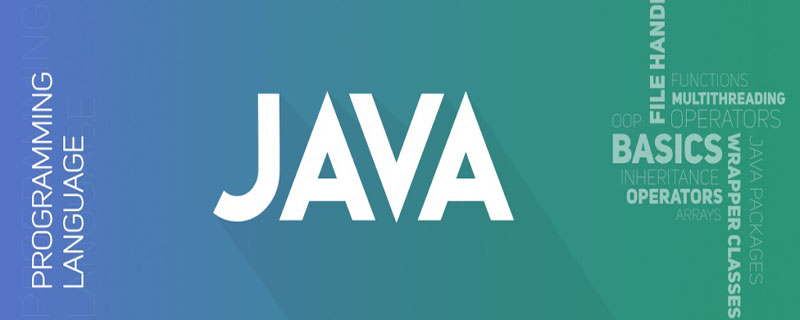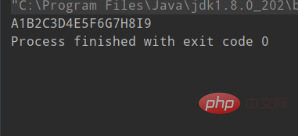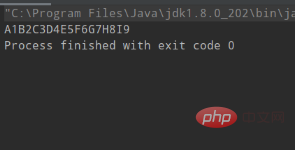Java implements two threads to alternately print

Use ReentrantLock to implement alternate printing between two threads
Realize letters in front and numbers in the back
package com.study.pattern;
import java.util.concurrent.CountDownLatch;
import java.util.concurrent.locks.Condition;
import java.util.concurrent.locks.Lock;
import java.util.concurrent.locks.ReentrantLock;
public class Demo2 {
private static Lock lock = new ReentrantLock();
private static Condition c1 = lock.newCondition();
private static Condition c2 = lock.newCondition();
private static CountDownLatch count = new CountDownLatch(1);
public static void main(String[] args) {
String c = "ABCDEFGHI";
char[] ca = c.toCharArray();
String n = "123456789";
char[] na = n.toCharArray();
Thread t1 = new Thread(() -> {
try {
lock.lock();
count.countDown();
for(char caa : ca) {
c1.signal();
System.out.print(caa);
c2.await();
}
c1.signal();
} catch (InterruptedException e) {
e.printStackTrace();
} finally {
lock.unlock();
}
});
Thread t2 = new Thread(() -> {
try {
count.await();
lock.lock();
for(char naa : na) {
c2.signal();
System.out.print(naa);
c1.await();
}
c2.signal();
} catch (InterruptedException e) {
e.printStackTrace();
} finally {
lock.unlock();
}
});
t1.start();
t2.start();
}
}Final output result:

Free learning video tutorial recommendation: java teaching video
Use LinkedTransferQueue to realize alternate printing of two threads
Realize letters first and numbers in After
package com.study.pattern;
import java.util.concurrent.LinkedTransferQueue;
public class Demo3 {
private static LinkedTransferQueue<Character> linkedC = new LinkedTransferQueue<Character>();
private static LinkedTransferQueue<Character> linkedN = new LinkedTransferQueue<Character>();
public static void main(String[] args) {
String c = "ABCDEFGHI";
char[] ca = c.toCharArray();
String n = "123456789";
char[] na = n.toCharArray();
Thread t1 = new Thread(() -> {
for(char caa : ca) {
try {
linkedC.put(caa);
char a = linkedN.take();
System.out.print(a);
} catch (InterruptedException e) {
e.printStackTrace();
}
}
});
Thread t2 = new Thread(() -> {
for(char naa : na) {
try {
char b = linkedC.take();
System.out.print(b);
linkedN.put(naa);
} catch (InterruptedException e) {
e.printStackTrace();
}
}
});
t1.start();
t2.start();
}
}Output result:

Use synchronized to realize alternate printing of two threads
To realize letters in the front and numbers in the back
package com.study.pattern;
import java.util.concurrent.CountDownLatch;
public class Demo4 {
private static CountDownLatch count = new CountDownLatch(1);
public static void main(String[] args) {
String c = "ABCDEFGHI";
char[] ca = c.toCharArray();
String n = "123456789";
char[] na = n.toCharArray();
Object lock = new Object();
Thread t1 = new Thread(() -> {
synchronized (lock) {
count.countDown();
for(char caa : ca) {
System.out.print(caa);
lock.notify();
try {
lock.wait();
} catch (InterruptedException e) {
e.printStackTrace();
}
}
lock.notify();
}
});
Thread t2 = new Thread(() -> {
try {
count.await();
} catch (InterruptedException e) {
e.printStackTrace();
}
synchronized (lock) {
for(char naa : na) {
System.out.print(naa);
lock.notify();
try {
lock.wait();
} catch (InterruptedException e) {
e.printStackTrace();
}
}
lock.notify();
}
});
t1.start();
t2.start();
}
}Output result:

package com.study.pattern;
import java.util.concurrent.locks.LockSupport;
public class Demo5 {
private static Thread t1;
private static Thread t2;
public static void main(String[] args) {
String c = "ABCDEFGHI";
char[] ca = c.toCharArray();
String n = "123456789";
char[] na = n.toCharArray();
t1 = new Thread(() -> {
for(char caa : ca) {
System.out.print(caa);
LockSupport.unpark(t2);
LockSupport.park();
}
});
t2 = new Thread(() -> {
for(char naa : na) {
LockSupport.park();
System.out.print(naa);
LockSupport.unpark(t1);
}
});
t1.start();
t2.start();
}
}
zero basic introduction to java
The above is the detailed content of Java implements two threads to alternately print. For more information, please follow other related articles on the PHP Chinese website!

Hot AI Tools

Undresser.AI Undress
AI-powered app for creating realistic nude photos

AI Clothes Remover
Online AI tool for removing clothes from photos.

Undress AI Tool
Undress images for free

Clothoff.io
AI clothes remover

Video Face Swap
Swap faces in any video effortlessly with our completely free AI face swap tool!

Hot Article

Hot Tools

Notepad++7.3.1
Easy-to-use and free code editor

SublimeText3 Chinese version
Chinese version, very easy to use

Zend Studio 13.0.1
Powerful PHP integrated development environment

Dreamweaver CS6
Visual web development tools

SublimeText3 Mac version
God-level code editing software (SublimeText3)

Hot Topics
 1386
1386
 52
52
 Perfect Number in Java
Aug 30, 2024 pm 04:28 PM
Perfect Number in Java
Aug 30, 2024 pm 04:28 PM
Guide to Perfect Number in Java. Here we discuss the Definition, How to check Perfect number in Java?, examples with code implementation.
 Weka in Java
Aug 30, 2024 pm 04:28 PM
Weka in Java
Aug 30, 2024 pm 04:28 PM
Guide to Weka in Java. Here we discuss the Introduction, how to use weka java, the type of platform, and advantages with examples.
 Smith Number in Java
Aug 30, 2024 pm 04:28 PM
Smith Number in Java
Aug 30, 2024 pm 04:28 PM
Guide to Smith Number in Java. Here we discuss the Definition, How to check smith number in Java? example with code implementation.
 Java Spring Interview Questions
Aug 30, 2024 pm 04:29 PM
Java Spring Interview Questions
Aug 30, 2024 pm 04:29 PM
In this article, we have kept the most asked Java Spring Interview Questions with their detailed answers. So that you can crack the interview.
 Break or return from Java 8 stream forEach?
Feb 07, 2025 pm 12:09 PM
Break or return from Java 8 stream forEach?
Feb 07, 2025 pm 12:09 PM
Java 8 introduces the Stream API, providing a powerful and expressive way to process data collections. However, a common question when using Stream is: How to break or return from a forEach operation? Traditional loops allow for early interruption or return, but Stream's forEach method does not directly support this method. This article will explain the reasons and explore alternative methods for implementing premature termination in Stream processing systems. Further reading: Java Stream API improvements Understand Stream forEach The forEach method is a terminal operation that performs one operation on each element in the Stream. Its design intention is
 TimeStamp to Date in Java
Aug 30, 2024 pm 04:28 PM
TimeStamp to Date in Java
Aug 30, 2024 pm 04:28 PM
Guide to TimeStamp to Date in Java. Here we also discuss the introduction and how to convert timestamp to date in java along with examples.
 Java Program to Find the Volume of Capsule
Feb 07, 2025 am 11:37 AM
Java Program to Find the Volume of Capsule
Feb 07, 2025 am 11:37 AM
Capsules are three-dimensional geometric figures, composed of a cylinder and a hemisphere at both ends. The volume of the capsule can be calculated by adding the volume of the cylinder and the volume of the hemisphere at both ends. This tutorial will discuss how to calculate the volume of a given capsule in Java using different methods. Capsule volume formula The formula for capsule volume is as follows: Capsule volume = Cylindrical volume Volume Two hemisphere volume in, r: The radius of the hemisphere. h: The height of the cylinder (excluding the hemisphere). Example 1 enter Radius = 5 units Height = 10 units Output Volume = 1570.8 cubic units explain Calculate volume using formula: Volume = π × r2 × h (4
 Create the Future: Java Programming for Absolute Beginners
Oct 13, 2024 pm 01:32 PM
Create the Future: Java Programming for Absolute Beginners
Oct 13, 2024 pm 01:32 PM
Java is a popular programming language that can be learned by both beginners and experienced developers. This tutorial starts with basic concepts and progresses through advanced topics. After installing the Java Development Kit, you can practice programming by creating a simple "Hello, World!" program. After you understand the code, use the command prompt to compile and run the program, and "Hello, World!" will be output on the console. Learning Java starts your programming journey, and as your mastery deepens, you can create more complex applications.




